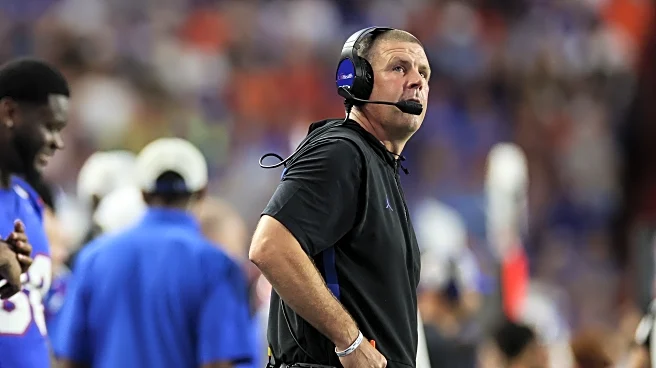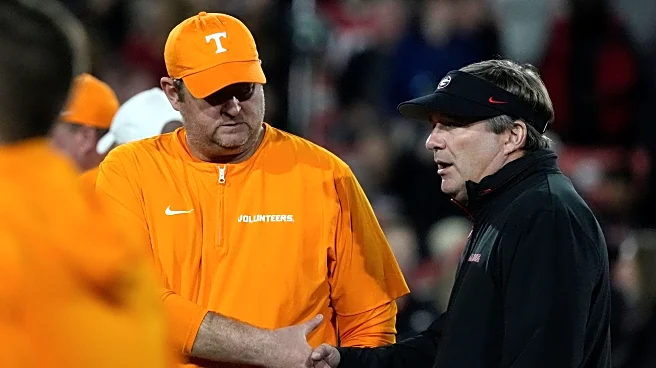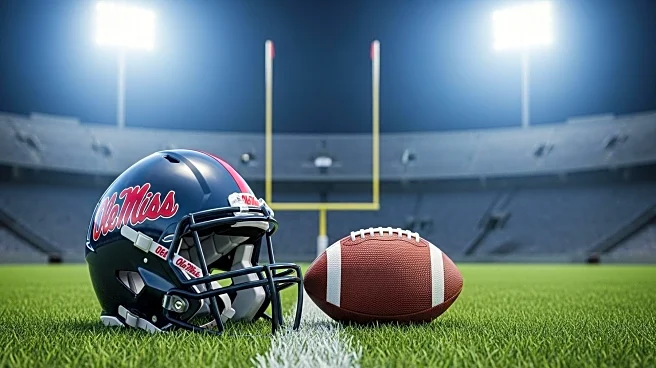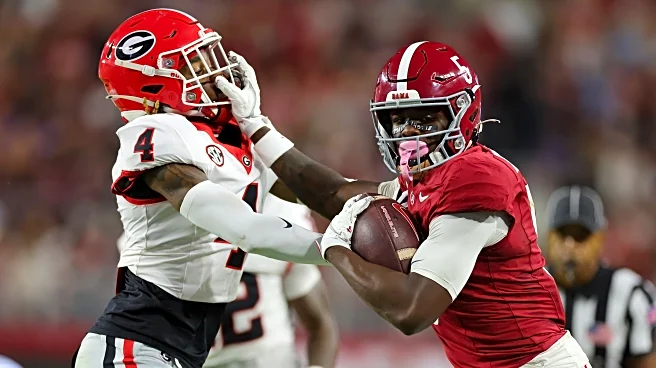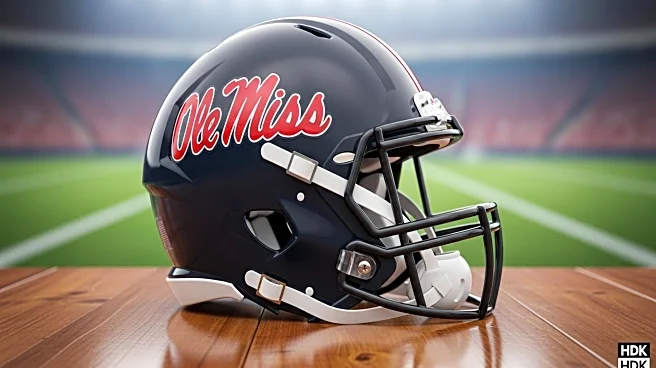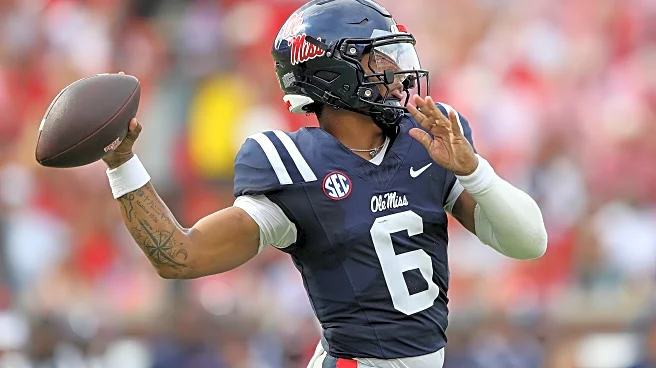What is the story about?
What's Happening?
Trinidad Chambliss, a former Division-II quarterback from Ferris State, has emerged as a key player for Ole Miss after stepping in for injured starter Austin Simmons. Chambliss led Ferris State to a national championship before transferring to Ole Miss, where he has become a dual-threat quarterback. Since taking over, Chambliss has led Ole Miss to victories over Arkansas and Tulane, throwing for 660 yards and three touchdowns, and rushing for 174 yards and two scores. His performance has sparked a quarterback controversy, as Ole Miss initially recruited him as a backup. Despite head coach Lane Kiffin's assertion that Simmons is the starter when healthy, Chambliss's success has raised questions about the future lineup.
Why It's Important?
Chambliss's unexpected rise highlights the potential for Division-II players to succeed at higher levels, challenging traditional recruitment strategies. His performance has implications for Ole Miss's season, potentially altering their offensive strategy and impacting their standing in the SEC. The situation also underscores the competitive nature of college football recruiting, where programs like Temple missed out on Chambliss due to Ole Miss's aggressive recruitment. Chambliss's success could influence future transfer decisions and recruitment strategies, as players and programs reassess the value of Division-II talent.
What's Next?
As Simmons recovers, Ole Miss faces a decision on their starting quarterback, which could affect team dynamics and performance. Chambliss's continued success may force Ole Miss to reconsider their initial plans, potentially leading to a permanent change in the starting lineup. The outcome of this quarterback controversy will be closely watched by other programs, influencing future recruitment and transfer strategies. Additionally, Chambliss may seek a waiver for an additional year of eligibility, further complicating the team's long-term planning.
Beyond the Headlines
Chambliss's journey from Division-II to SEC success raises questions about the visibility and valuation of talent across different levels of college football. His story challenges perceptions of player development and the pathways to professional opportunities, potentially inspiring other Division-II athletes to pursue similar transitions. The ethical considerations of recruitment practices and the financial aspects of college sports are also highlighted, as programs compete for top talent with significant financial offers.
AI Generated Content
Do you find this article useful?



